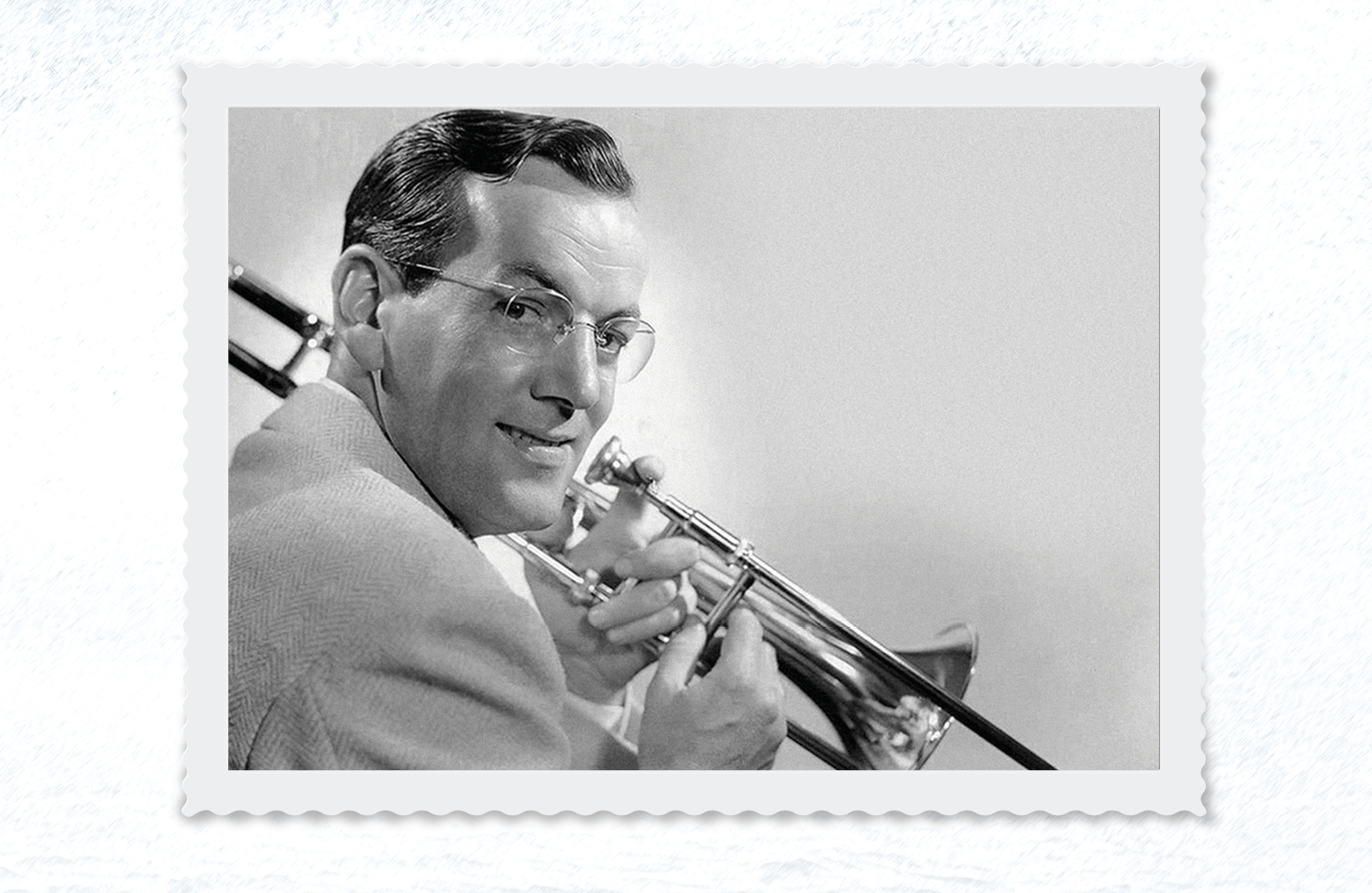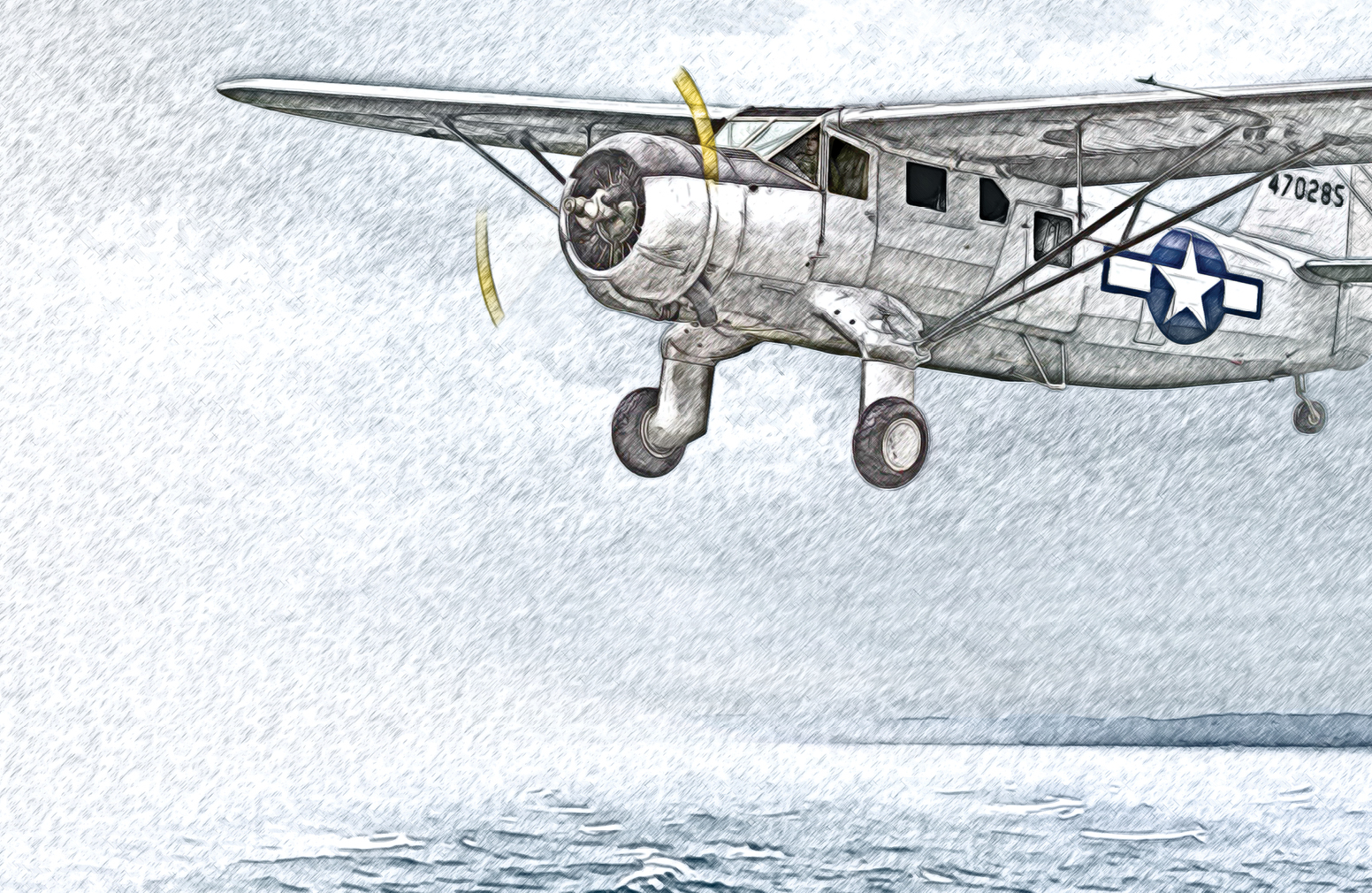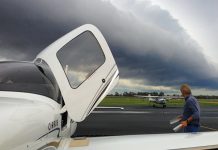‘Barring a nosedive into the channel, I’ll be in Paris in a few days’. – Glenn Miller, in a letter to his brother Herb, 12 December 1944
On the morning of 8 December 1941, Glenn Miller reflected on his fame and fortune, and decided these glories counted for nothing, compared to his duty.
As many other Americans did that Monday – the day after Japan attacked the United States’ fleet at Pearl Harbour – he resolved to enlist. His principled decision began a chain of events that would lead to his death 3 years later.
Miller, a jazz musician who had developed big band music into a cultural phenomenon, had fame and fortune in abundance. ‘He crossed over between the jazz and popular idioms,’ says Dennis M Spragg, senior consultant at the Glenn Miller Archive and the author of Glenn Miller Declassified. ‘Glenn Miller was America’s number one musician and his band was America’s favourite band.’
In terms of dominance if not musical style, contemporary singer Taylor Swift is the closest modern analogue to Miller, Spragg says. ‘Considering his short career, he was quite a bit more successful than either Elvis Presley or the Beatles.’ Miller’s music was heard throughout the English-speaking world and brought an income reported in 1942 at US$20,000 a week.
Regardless, that evening he told a friend, ‘There must be something a broken-down old trombone player can do to help.’ He enlisted in the US Army on 20 August 1942.
Spragg says Miller, a driven serious man, wanted to put his talent to the most effective use in the Allied war effort. ‘He formed an elite radio production unit and fought to bring it overseas, closer to the second front. Once he was in the United Kingdom, and France was liberated, he agitated very hard to bring the band to the continent. He was always, to use an aviation term, ‘pressing the envelope.’
In the middle weeks of December 1944, his boundless energy encountered an implacable obstacle – the British weather. He found himself on a priority II wait list to fly from Bovingdon, near London, to Paris Orly Airport. On 13 December, he rode the early bus to Bovingdon but got no further. All flights were cancelled due to weather. He repeated the journey the next day, with the same result, returning exhausted to his London hotel about lunchtime.
As he was sleeping that afternoon, a band staff officer was having lunch with a senior officer at a US Army Air Force (USAAF) headquarters in Bedfordshire. The senior officer said he had his own assigned aircraft and pilot, and Miller was welcome to hitch a ride to France. When the phone rang in his hotel room, Miller accepted the lift. The staff officer collected him from London by car that evening.

Weather at Twinwoods, the departure airfield, the next morning was grim, with a 250-foot ceiling and 200-metre visibility. All training was cancelled, although elsewhere in England that day, British and American bombers took off for German targets. By early afternoon, conditions had improved to the extent that the assigned pilot took off from Alconbury in Cambridgeshire for the 17-mile flight south to Twinwoods, where the senior officer and Miller were to be collected. The Norseman was on the ground for 4 minutes without stopping its engine and took off at 13:55.
Later that afternoon, a 17-year-old volunteer aircraft observer at Woodley, west of London, recorded a Norseman flying south-east. Observers at Beachy Head recorded a Norseman flying towards Langney Point, on the Sussex coast where the Amber route across the channel began. Nothing more was seen of Miller, the senior officer, Lt-Col Norman F Baessell, and the pilot, Flight Officer Stuart Morgan, all of whom to this day remain officially listed as missing.
Even if conditions were warm enough over the sea to avoid airframe ice, the Norseman would still have faced carburettor icing.
The 4 sections
Just as an orchestra consists of 4 sections (string, woodwind, brass, percussion), the disappearance of Miller, Baessell and Morgan can be analysed as an interplay of 4 factors, which combine in harmony, counterpoint and interplay to produce a unique result.
Aircraft
Noorduyn Aviation’s Norseman first flew in 1935 and was specifically designed for operations in the far north of Canada. It was a 10-seat high-wing monoplane similar in concept to the later de Havilland Canada Otter or a 21st century Daher Kodiak. Anti-ice and de-ice systems did exist in World War II but not on noncombat aircraft. The Norseman, with its multitude of struts, brace wires and fixed landing gear exposed to the slipstream, had no shortage of places to accumulate airframe ice. An anti-ice fluid known as Kilfrost could be applied on the ground but was prioritised for combat aircraft and there is no evidence any was applied to the Norseman that day.
‘I flew in a Norseman in British Columbia where the Canadian Warplane Heritage Museum has an operating example,’ Spragg says. ‘The 3 pilots who flew it all said, “It ices up all the time!” The Norseman is certainly prone to icing by modern standards but, if handled properly, this can be managed.’
Even if conditions were warm enough over the sea to avoid airframe ice, the Norseman would still have faced carburettor icing. The carburettor icing chart for its Pratt & Whitney radial engine shows at a temperature around 5 degrees, it would have been in the centre of the ‘serious icing – any power’ zone.
Personnel
The senior officer, Baessell, had been a civil engineer before joining the army. In uniform he directed the building of several air bases and earned a reputation as a man who got things done.
‘Recollections of people who served with Baessell are consistent,’ Spragg says. ‘He was apt to speak loudly, use profane language in almost every sentence and would exhibit a boisterous “can-do” personality.’ To the left of him, behind the Norseman’s throw-over yoke, sat Stuart ‘Pee Wee’ Morgan, a diminutive Scottish-born naturalised American who had enlisted in the Royal Canadian Air Force. When the US joined the war, he transferred to the USAAF where his non-commissioned flight sergeant rank was converted to flight officer, a new rank at the bottom of the commissioned officer hierarchy.
The picture that emerges is of a larger-than-life senior officer, twice the age and approaching twice the size of the 22-year-old pilot. Squadron records strongly suggest Baessell had chosen Morgan to be his informal personal pilot. ‘Baessell had the ability to authorise his own flights, which sounds preposterous, but nobody intervened to stop him.’
Procedures
Assumptions made by flight dispatchers enabled the flight to proceed. ‘It was well forecast the weather in Paris was not going to be good,’ Spragg says. ‘My guess is the authorities at Alconbury would have rightly presumed he was going to stop at Bovingdon and take another look before he proceeded across the water.’
Had Morgan shut down the Norseman’s engine at Twinwood, he would have been required to go to the airfield’s watch office and submit fresh paperwork for the flight which would involve reading the latest, and markedly worse, weather forecast. By keeping the engine running, his arrival was recorded as transient, his take-off was unquestioned and he continued the flight under his original VFR clearance.
Miller had not informed his chain of command about his flight. They were not aware anything had happened until the following Monday. He was not authorised as a casual traveller under any circumstance and had his commanders been aware, he would have been ordered not to go.
Had the flight touched down in France, it is likely Baessell would have been court martialled, Morgan removed from flying duties and Miller reprimanded, Spragg says.
Weather
Hollywood created a misconception about Miller‘s crash.
‘According to The Glenn Miller Story movie, RAF Twinwoods was fogged in,’ Spragg says. ‘If that had been the weather, the aircraft would never have left the ground. Baessell and Morgan were not suicidal.’
Marginal weather, as countless later crashes have shown, is more dangerous than downright atrocious conditions. ‘It leads you to make careless decisions. A moderately experienced pilot becomes tempted to think, “I can do this, no problem”,’ Spragg says.
Morgan’s miscalculation was how the weather would be over the sea, Spragg says. ‘That’s where the situation changed. To maintain visual contact, he probably had to come down lower and lower in wet conditions. Regardless of whether the ceiling was up to 2,000 feet, he would have seen a sheet of grey – everything would have blended together.’
I conclude the pilot put the aircraft in a position to fail at the insistence of the senior officer.
What probably happened
Spragg cannot avoid the nagging feeling that Baessell directly or indirectly influenced Morgan to continue the flight as conditions deteriorated.
‘I conclude the pilot put the aircraft in a position to fail at the insistence of the senior officer,’ he says. ‘It’s entirely within character, and witnesses on the ground testify, that Baessell was anxious to go, as was Miller.’
The end would have come by 3 plausible means, none of which would give time for a distress call, Spragg says.
If something happened, he might have had about 8 seconds to react and even if he had made a distress call, he was below the horizon – nobody would have heard it.
First, if it was a hydraulic failure which the aircraft had experienced on an earlier flight, that could have been horrific – the propeller would have run away and snapped off.
Second, carburettor icing – the engine would have choked, then stopped. And the C-64 couldn’t glide. If you had an engine quit, the nose would immediately drop because all the weight of the big engine was in the front so a controlled ditching would have been unlikely.
Third, it’s entirely possible the engine functioned properly and Morgan just flew it into the water through spatial disorientation.
What never happened
In 1984, an RAF navigator told a journalist he had seen a single-engine aircraft struck by the bombs his Lancaster had jettisoned on the afternoon of 15 December 1944. This story gained currency in the media, but Spragg demolishes it.
‘We know beyond any doubt that RAF Lancasters did not accidentally cause the C-64 to crash from an errant bomb jettison,’ he says.
The spotter’s sighting of the Norseman at Woodley makes it impossible for the aircraft to have been in the bomb jettison area, even if Morgan had made the serious navigational error that would have been required to go there. The historian who promoted the navigator’s account had not realised Britain was on daylight saving summertime during the war, even in winter. Putting the correct times into the account separates the aircraft by 90 minutes – meaning the Lancaster was on the ground before the Norseman took off.
The final notes
Miller had a confirmed flight at 10:15 on Sunday 17 December and would have arrived in Paris to find the administrative issues he was so keen to address had been resolved. The lessons from his death are as lasting as his music: impatience and weather are a deadly combination, particularly when conditions are in the ‘let’s have a look’ category rather than unambiguously unflyable.
A ‘perfect storm’ in Spragg’s words, of air and ground-based human error, mechanical failure and weather had killed a journeyman pilot, an overbearing but capable officer and an energetic, authentic patriot – who did not have to be there.





